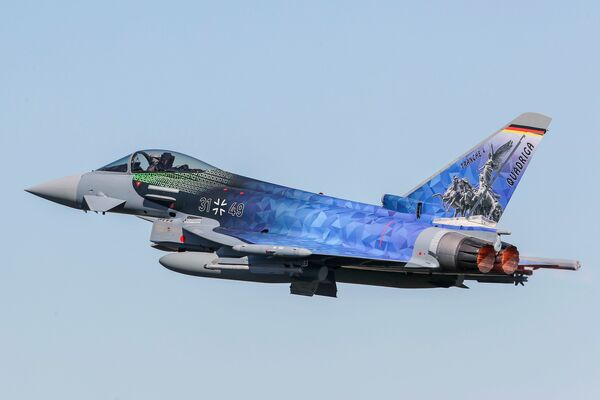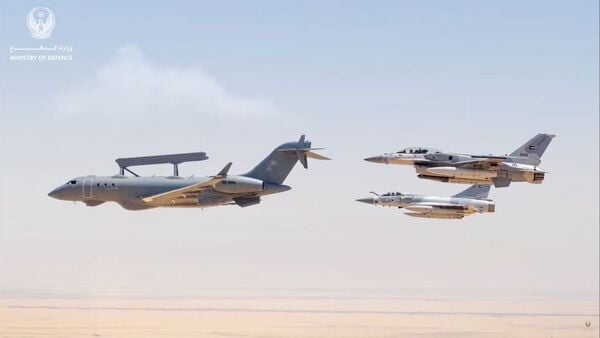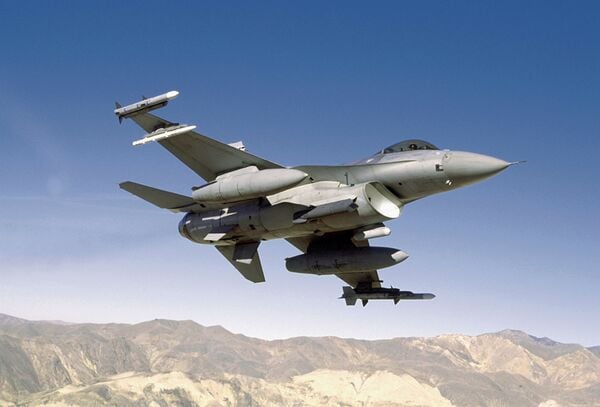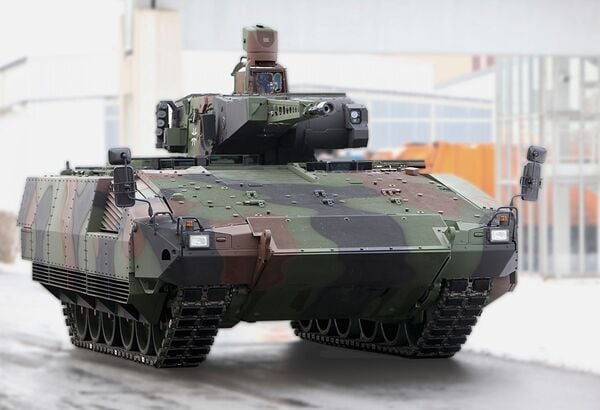- About
- Intara
- Capabilities
- Advisory
- Resources
- News
- Store
Luftwaffe to roll out E-Scan radar across entire Eurofighter fleet
25 September 2023
by Gareth Jennings


The Luftwaffe intends to equip all its Eurofighter combat aircraft with the ECRS Mk 1 E-Scan radar. (Luftwaffe)
The German Luftwaffe will equip its entire fleet of Eurofighter combat aircraft with electronically scanned (E-Scan) radar sets, the government disclosed on 21 September.
Included in the Bundestag's Budget Committee approval list was the commitment to receive all newbuild Eurofighters with the European Common Radar System Mark 1 (ECRS Mk 1) E-Scan radar, and to retrofit the Luftwaffe's existing fleet of aircraft with Captor-M mechanically scanned (M-Scan) radars.
“All [Luftwaffe] Eurofighters will be equipped with a modern E-Scan radar,” the Bundeswehr said. “Newly ordered fighter jets will be delivered directly with the E-Scan radar, as 38 Eurofighters will arrive in the force from 2025. The remaining machines will have their radars retrofitted in the following years.”
Under the terms of the committee's approval, EUR197.7 million (USD210.4 million) has been earmarked for the development, procurement, and retrofitting of the ECRS Mk 1 over the term of the upcoming budget cycle. More funding will need to be made available for its completion.
UAE inaugurates GlobalEye early warning aircraft
25 April 2024
by Jeremy Binnie


The UAE's fourth Saab GlobalEye was delivered on 18 April. (Ministry of Defence of the United Arab Emirates)
The Ministry of Defence (MoD) of the United Arab Emirates (UAE) announced on 24 April that a reception ceremony for an early warning aircraft had been held at Al-Dhafra Air Base.
It cited Major General Ibrahim Nasser al-Alawi, the commander of the Air Force and Air Defence (AFAD), as saying the aircraft was a “qualitative addition” that will help protect the country's strategic interests.
The MoD released a video showing a Saab GlobalEye airborne early warning and control (AEW&C) aircraft without AFAD markings being escorted by F-16 and Mirage 2000-9 fighters before landing at Al-Dhafra, as well as personnel with 8th Aviation Wing badges working at a ground station.
Saab confirmed on the following day that it delivered the fourth of five GlobalEyes ordered by the UAE on 18 April.
Lockheed Martin to ramp up UK Sniper production
24 April 2024
by Gerrard Cowan


Seen being carried by a US Air Force F-16, the Sniper ATP is built in Florida in the US and Bedfordshire in the UK. Lockheed Martin is now ramping up UK component production to meet increased customer demand. (Lockheed Martin)
Lockheed Martin is building a new production line for AN/AAQ-33 Sniper Advanced Targeting Pod (ATP) components at its Ampthill, Bedfordshire site in the UK, seeking to meet anticipated demand from NATO allies and other customers for the system, the company has told Janes .
The UK-based work on Sniper supports the manufacturing activities at Ocala, Florida. This work has been expanded with a new production line at Ampthill that will focus on producing cabling to integrate the system into aircraft.
Stacy Kubicek, Lockheed Martin's vice-president and general manager – sensors and global sustainment, said the fresh investment is part of a wider strategy at Lockheed Martin. She placed it into the context of a shifting outlook among customers.
Germany orders simulators for Puma IFVs
19 April 2024
by Olivia Savage


The Bundeswehr has ordered 258 sets of AGDUS systems for its Puma IFVs following successful integration tests. (PSM GmbH)
The Bundeswehr is receiving new training simulators for its Puma infantry fighting vehicles (IFVs).
In total, 258 sets of Training Device, Duel Simulator (Ausbildungsgerät Duellsimulator: AGDUS) systems are being delivered for the Puma IFVs by the end of 2026, the Bundeswehr announced on 15 April.
The EUR109 million (USD116 million) contract will be financed from the EUR100 billion Bundeswehr special fund.
A Rheinmetall/Krauss-Maffei Wegmann (KMW) consortium received an order from the Bundeswehr in December 2019 valued at EUR54 million for the provision of six AGDUS systems for integration tests on the Puma. Full-scale serial production of AGDUS would then begin once testing was complete, with up to 252 Puma IFVs being equipped with the systems for EUR88 million.
A Rheinmetall spokesperson confirmed to Janes that the company, along with KMW+Nexter Defense Systems (KNDS) Germany, are supplying the new AGDUS simulators to the Bundeswehr and that full-scale production has now officially begun.
The German Luftwaffe will equip its entire fleet of Eurofighter combat aircraft with electronically ...
Latest Podcasts
Iran Israel analysis
In this podcast Janes analysts discuss the Iranian attacks on Israel on the 14 April. They highlight the military systems used by Iran and the performance and impact of these on Israel. They also discuss the implications of this attack goi...
Listen nowJanes Case Studies
Using Janes Intara to build a common intelligence picture: Russian build up on the Ukrainian border
View Case StudyNews Categories
 C4ISR Details
C4ISR Details